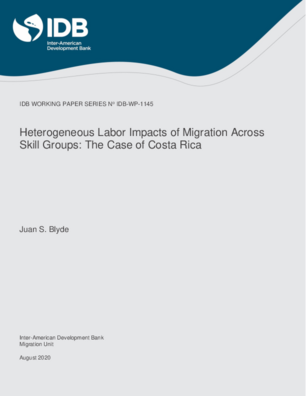Heterogeneous Labor Impacts of Migration Across Skill Groups: The Case of Costa Rica
Date
Aug 2020
Popular empirical strategies that examine the labor impacts of migrants, like the skill-cell approach, are frequently used to measure the effects of immigrants from a particular skill group on native-born workers with similar skills. I use an augmented version of the skill-cell approach to examine the impacts of immigrants on native workers with similar skills but also across skill groups. I apply this approach to the case of Nicaraguan immigrants in Costa Rica. I find large positive employment and wage effects on high-skilled women arising from low-skilled migrants. These positive effects are derived from both the household channel and the complementary-skills channel. I also find negative but small effects on low-skilled native workers. The results show that immigrants can have complex labor market effects on native workers with own and cross elasticities that can be quite different.




